Tenmoku, due to its varied spotted glaze and rich cultural background, has gained the love of many friends. However, when choosing Tenmoku, many friends often encounter various problems. So, what should new Tenmoku enthusiasts pay attention to when selecting Tenmoku?
1. Look at the glaze color.
Glaze color is almost always the primary criterion for selecting porcelain, but there is no distinction between good and bad glaze colors, as personal aesthetic preferences may differ. We should not overly concern ourselves with which glaze color is better, but rather follow our hearts and choose the glaze color that we find beautiful and appealing. However, each glaze color does have differences in quality and coarseness, and there are guidelines that can be used as reference. Let's take a look together with the editor!
Rabbit hair Tenmoku.
"The color of Tenmoku should be black or green, and the ones with jade hair streaks are the best." Since it is a rabbit hair Tenmoku, it should naturally be chosen with the "jade hair streaks" as recommended by Song Huizong.
The conditions that rabbit hair Tenmoku needs to meet are: the rabbit hair should be well-distributed, the boundaries clear, with a three-dimensional effect, and a silver-blue color is preferred. In the same Tenmoku, the rabbit hair pattern may be clear in some areas and blurry in others, and even different colors may appear in different areas. The pattern may also have unique transitions to create a more layered and three-dimensional effect.
Rabbit hair comes in several colors, including yellow, silver, blue, red, and gold. Most craftsmen produce yellow rabbit hair Tenmoku, while silver rabbit hair is a rarer variety.

Oil spot Tenmoku.
Which oil spot is good? Similarly, this question varies from person to person. Some people like sparse large drops, while others prefer fine small drops. Oil spot Tenmoku produced by different craftsmen also have their own distinct characteristics. To choose the oil spot Tenmoku that you like, you can mainly consider the following aspects:
Uniformity - In most cases, the more uniform the oil drops, the better, but it is not absolute. There are many unique Tenmoku with uneven distribution of oil drops, but they are still aesthetically pleasing.
Size of oil drops - The size of oil drops is related to firing temperature, atmosphere, and glaze material, with temperature having the greatest impact. The higher the temperature, the larger the area of crystal precipitation adhering to the black glaze surface, and the greater the flow and aggregation, but it is not necessarily more difficult to fire larger oil drops.

Glaze color - Currently, there are dozens of glaze colors available on the market, with blue and silver being the main colors, as well as colors such as gold, yellow, red, green, and rainbow. When purchasing, it is recommended not to deliberately pursue unique colors.
Crystal texture - This is a relatively vague concept that can be demonstrated by the vitrification effect we often talk about

2. Look at the vessel shape.
In the realm of practical vessels, the currently mainstream vessel shapes are the "shu kou" (flared lip), "pie kou" (flared mouth), and "lian kou" (inward-curved lip) types. The "yulan cup," "gaozu cup," and "zhending cup" are all variations based on these prototypes. When selecting, you can generally choose according to different needs: the "shu kou" type has a deep capacity, while the "pie kou" type has a smaller capacity but is beneficial for observing the color of the tea soup and the pattern on the Tenmoku, due to its outward-curved lip.
3. Look at the clay body and glaze material.
Tenmoku's clay body has a high iron content, also known as iron body. The glaze material used to fire Tenmoku is mainly composed of quartz and feldspar, with a high iron content and a small amount of clay. The washed mineral glaze has a red or purple color and belongs to the iron-calcium crystal glaze system.
It may not be easy to identify and judge Tenmoku at first, but as long as you purchase Tenmoku from reputable sources and avoid buying Tenmoku without a signature on the bottom (because it is impossible to determine the safety of the glaze material and the potter who made it), there should not be a big problem. As for the clay body, craftsmen in the Jianyang Shuiji area generally do not use clay from other regions with lower iron content, so this can be trusted.
4. Look at the iridescent effect.
The charm of Tenmoku lies in its iridescent effect, which emits different colors in sunlight, artificial light, and when tea is poured into it, mainly in gold, silver, and blue. Speaking of the common rabbit hair and oil spot Tenmoku, "silver-blue is the preferred color for rabbit hair Tenmoku, while the oil spot Tenmoku exhibits a silver color, which is even better if it has a blue light."


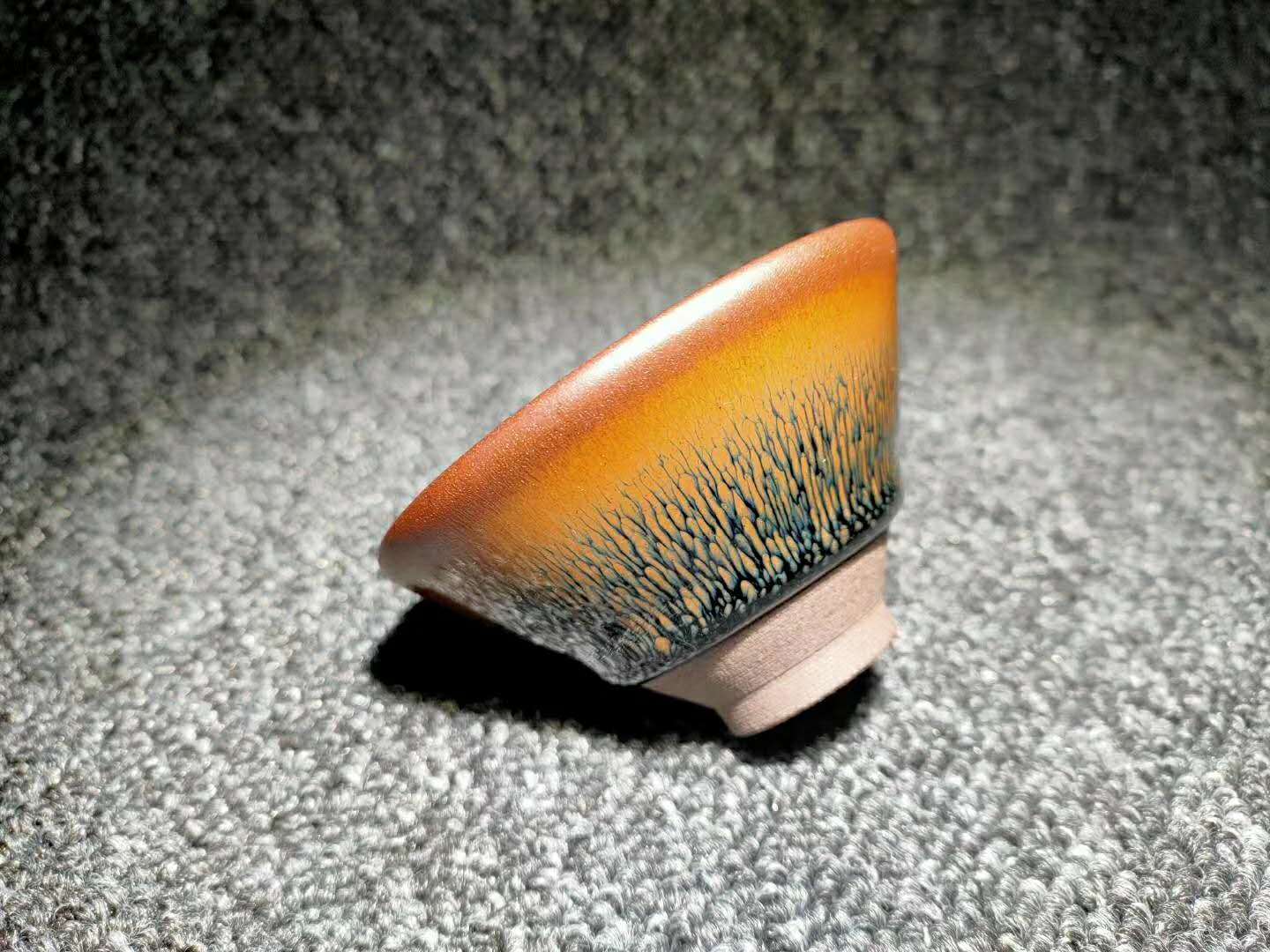
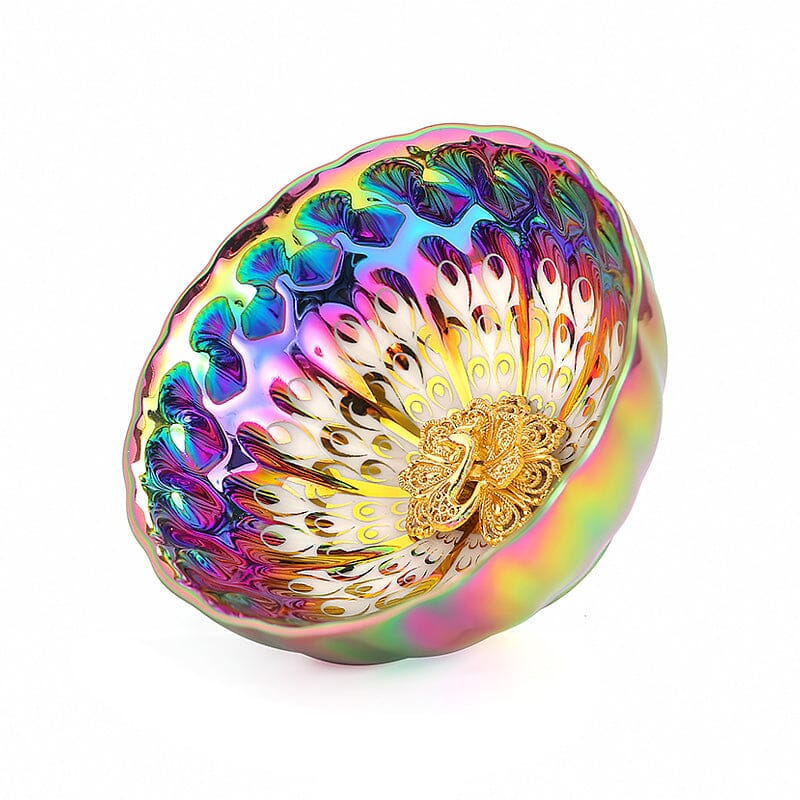
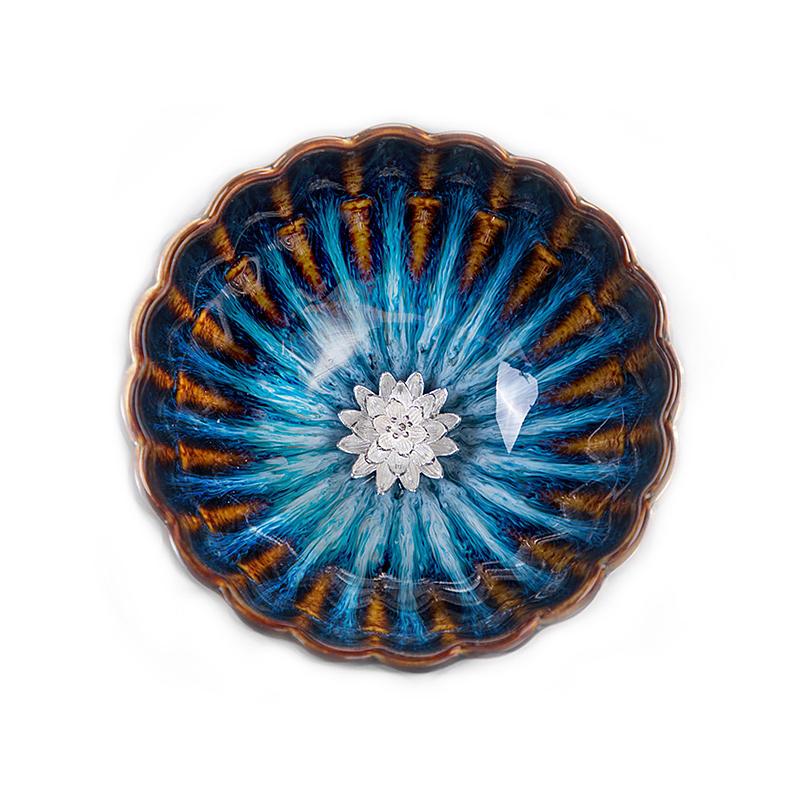
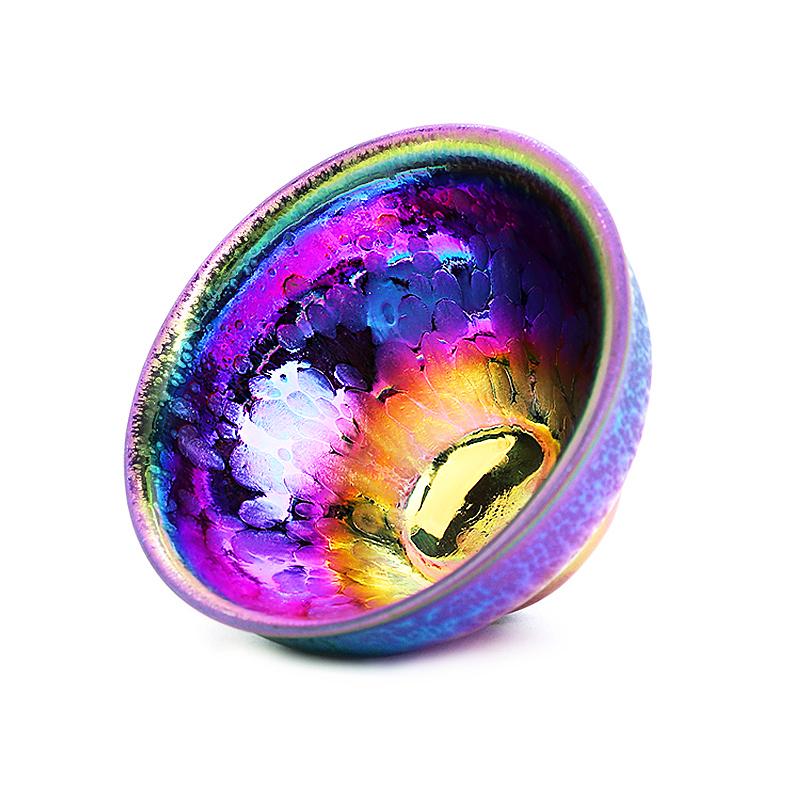
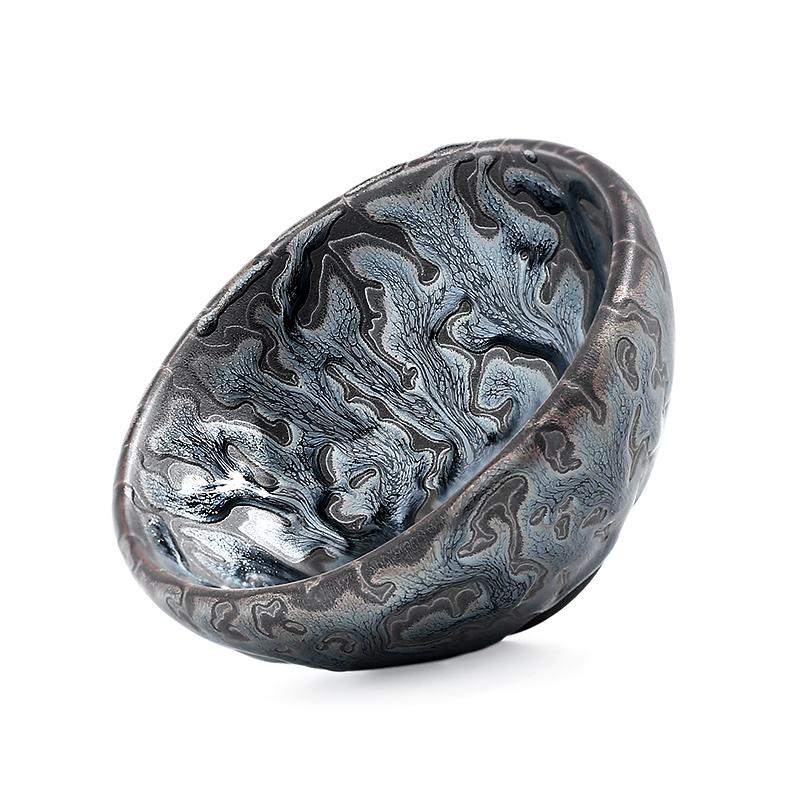
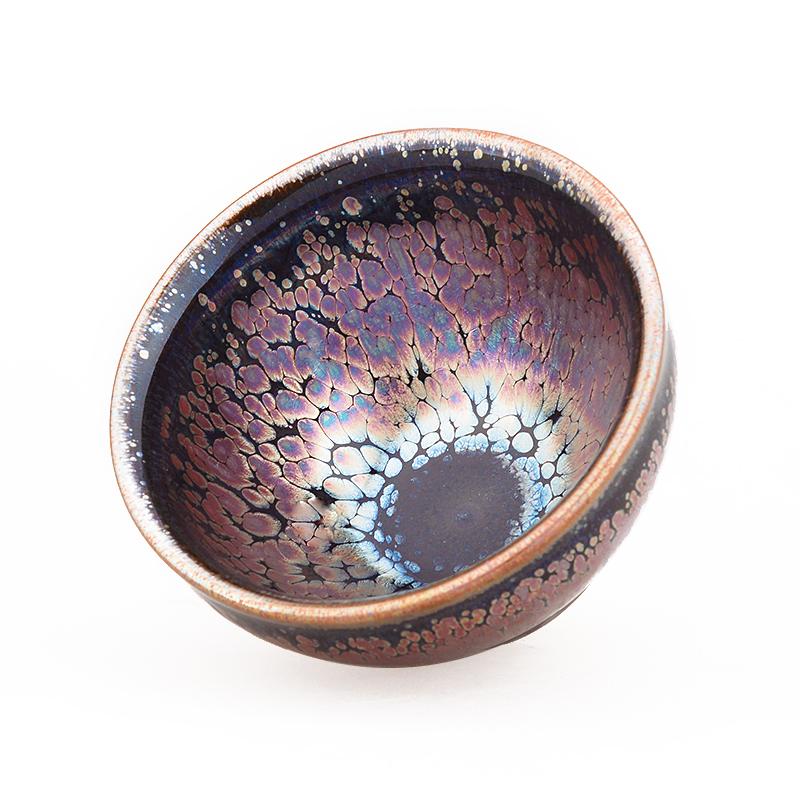
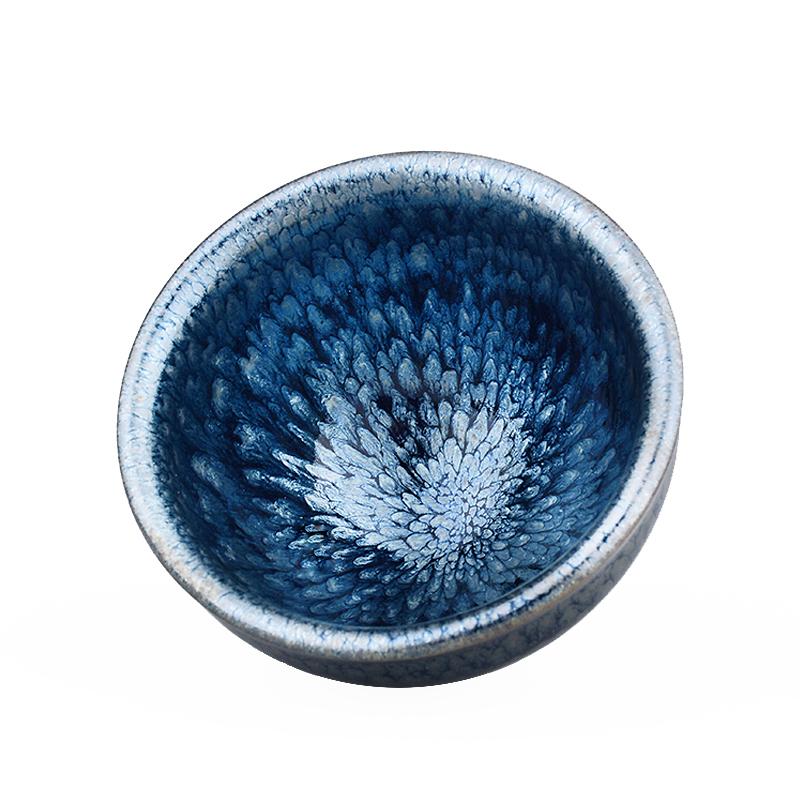
Share:
Is "Tenmoku price".
Choosing a Tenmoku teacup, only these few points matter!